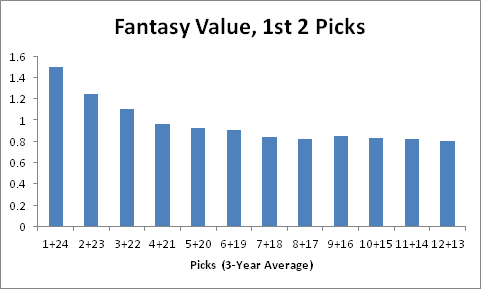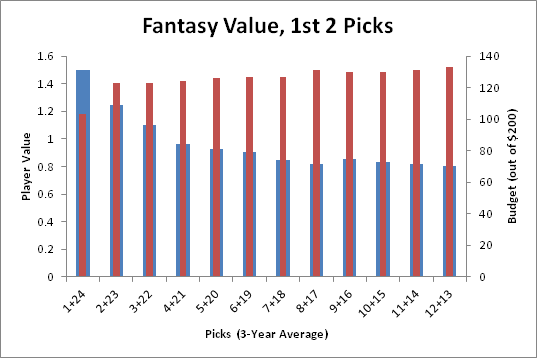Fantasy: Top-heavy NBA requires auction format for best experience
The NBA is a star-driven league.
That reality is paramount to the league's marketing strategy. It's why teams will accept multiple wasted seasons for a better chance at landing and developing a marquee star through the draft. It's why the existence of maximum salaries is a point of discussion time and again.
It's also why fantasy basketball doesn't lend itself well to a traditional, snake-style draft. Taking turns, pick by pick, is the simplest way to draft, and the easiest to organize. Unfortunately, it's also terribly unfair and puts your league at serious risk of simply rewarding the player with a high pick and some injury luck.
The 2013-14 season didn't stand out quite as badly as the 2012-13 and 2011-12 seasons, but it was still readily apparent that having a top pick is a serious competitive edge. If the league format assigns picks randomly, a great deal of luck is introduced into the proceedings from the very outset.
In 2012-13, Kevin Durant and LeBron James were lightyears beyond any other players in overall value, and balancing picks out by using a snake format (where the No. 1 pick would then pick last in the next round) isn't nearly enough to make up for the edge landing one provided. In 2011-12, those two were joined by Chris Paul as a triumvirate of fantasy dominance.
Last season, a somewhat down year for James, statistically, saw Durant above and beyond the rest of the league. Steph Curry, Kevin Love, and Anthony Davis (even in a 67-game campaign) also elevated their games to spread some of the value beyond the top picks. The issue remained, though, that beyond the first few picks, the gap between players is incredibly small, so the difference between No. 23 and No. 24 is almost nonexistant. And again, the gap between No. 1 and No. 2 is enormous.
The graph below shows the fantasy value of the top-24 players in fantasy, as calculated based on standardized scores by Basketball Monster:

That's a steep decline. Notice how the curve flattens out once the second round begins - the edge gained with a high first round pick isn't even remotely made up for by a low second round pick:

The solution to this is a little more difficult to put in to practice than a snake draft, but it's actually a lot of fun and introduces a lot more strategy and game theory to a league (more on those strategies another time).
An auction draft gives each fantasy player a budget. Instead of taking turns selecting an NBA player, players take turns nominating a player, with the whole league then proceeding to bid. The highest ultimate bid wins the player at the final bid price.
What this serves to do is reward the top players to the person with the highest willingness to pay, and that player then has less money to operate with the rest of the way. Durant still would have been the most valuable player in the league by a long shot, worth $70 in a 12-team, $200-cap league, $20 more than any other player, but he likely would have sold for a price commensurate with his value.
Assuming the same 24 players were selected at their fair value - not a great assumption, but it's fine for illustrative purposes - the teams who missed out on top names have an edge in spending power the rest of the draft, hopefully balancing some of that gap out:

The player who lands the best NBA talent will still have an edge, but they've now purchased that edge at a cost elsewhere on their team, rather than being gifted that edge by random chance.
It takes a little longer, and there's a bit of a learning curve involved with the format, but auction or salary cap leagues are really the only way to equitably distribute the league's top talent.